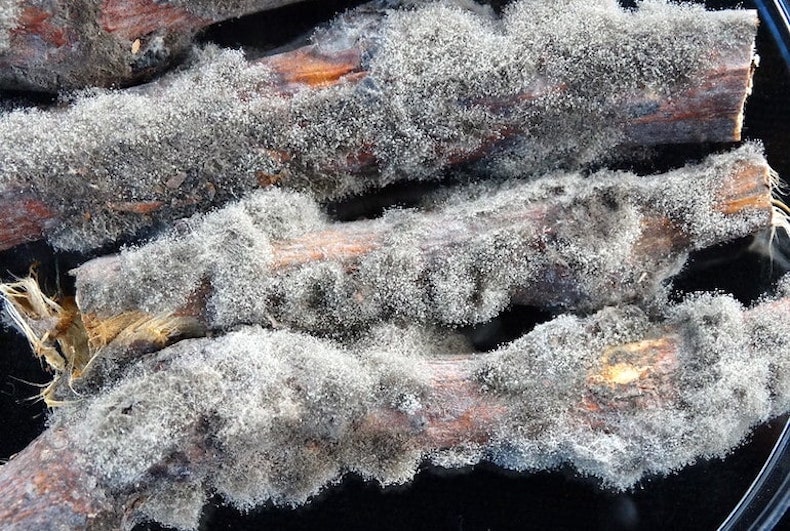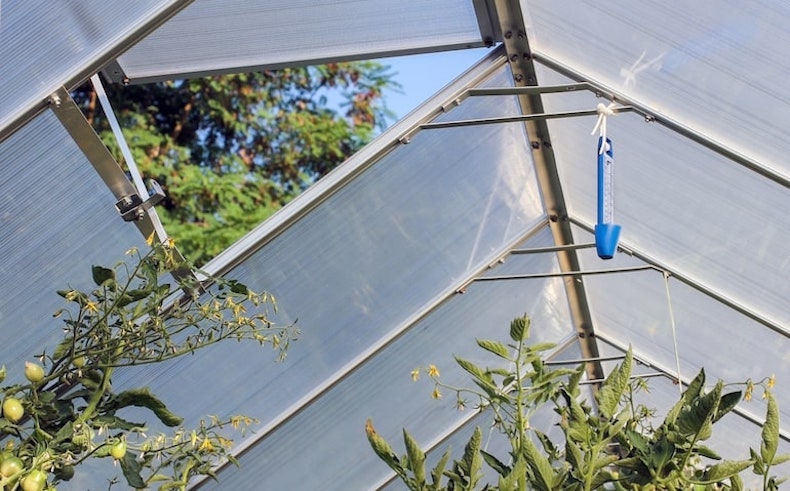Garden diseases - Botrytis

Botrytis is an unsightly and damaging fungus
Image: Floki/Shutterstock
Botrytis is a common fungus that can infect and destroy ornamental plants, as well as a wide range of fruits and vegetables.
What is botrytis?
Botrytis is the commonly-used name for the Botrytis cinerea fungus, also known as grey mould. It’s a disease that typically infects stressed plants or ones with open wounds, but it can impact healthy specimens as well. While an infestation can occur at any time of year, it is prevalent during times of increased humidity, which is why plants grown under glass are particularly vulnerable.
In addition to greenhouse plants, botrytis often impacts ornamental plants, houseplants as well as fruits and vegetables like strawberries, grapes, apples, cucumbers, courgettes, and tomatoes.
How to recognise botrytis

Grey mould is the most common sign that a plant is infected by botrytis
Image: Scot Nelson on Flickr
“Grey mould” is an apt name and description for the damage this fungus does to plants. The grey-coloured fuzz is soft in texture and appearance, although it can manifest as soft brown rot on ripening fruits like strawberries and grapes.
When conditions are humid, the botrytis may envelop whole parts of the plant, from flowers and fruits right through to its leaves and stems. However it’s more normal to find discrete spots of mould, with filament-like black structures within them. Through the winter, botrytis survives in a dormant state, called sclerotia, on plant debris. When spring arrives the spores are dispersed by wind and water splash.
How to treat botrytis

Removing infected fruit is the first step in clearing your garden
Image: Brum/Shutterstock
If plants in your garden become infected with botrytis, the first step is to safely dispose of the infected plants. Don’t put them in the compost bin. For isolated cases, you can simply remove the dead or dying leaves, buds, and flowers. Just be sure to sterilise any tools you use when pruning the infected areas to prevent recurrence.
You should also thoroughly clean the areas surrounding the infected plants, removing any fallen leaves or debris from the soil. As botrytis is often found near the soil surface, be vigilant about keeping the soil free of debris. Decaying plant material provides a hospitable environment for the fungus, encouraging it to stick around.
How to prevent botrytis

A well ventilated greenhouse helps reduce the chance of botrytis
Image: Marina Lohrbach/Shutterstock
- Keep greenhouses well ventilated to reduce humidity levels.
- Give plants plenty of space.
- Check plants regularly and deal with any signs of infection immediately.
- Water greenhouse plants from below to avoid splash-back spores finding a new host.
Other pages you might like
See all pests & diseases guides
Individual guides
Diseases
- Apple scab
- Bacterial canker
- Blackleg
- Blossom wilt
- Brown rot
- Clematis wilt
- Downy mildew
- Fungal disease
- Honey fungus
- Leaf scorch
- Leaf spot
- Leek rust
- Lily disease
- Peach leaf curl
- Pear rust
- Phytophthora root rot
- Potato & tomato blight
- Powdery mildew
- Silver leaf fungus
- Tomato greenback
- Tomato leaf curl
- Tomato stem canker







